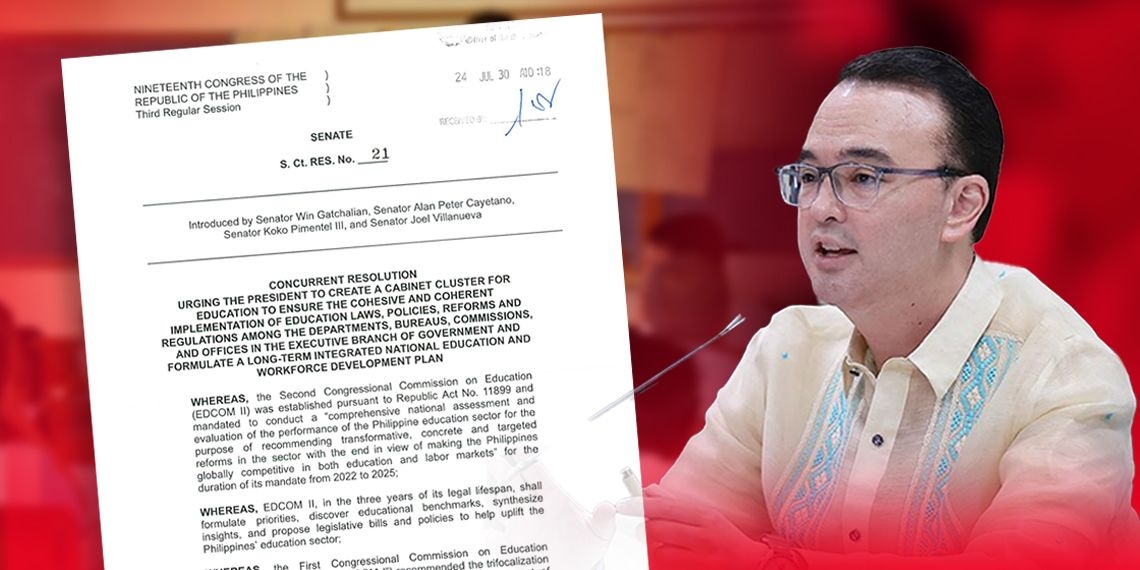Senator Alan Peter Cayetano has co-authored a concurrent resolution urging the President to establish a Cabinet Cluster for education to ensure the cohesive and coherent implementation of education laws, policies, reforms, and regulations.
Filed on Tuesday, July 30, 2024, Senate Concurrent Resolution No. 21 aims to address the persistent learning crisis in the country by ensuring “strong coordination among key departments and agencies involved in education and workforce development.”
As a concurrent resolution, it must be passed by both the Senate and the House of Representatives in the same form. The Senate resolution is co-authored by Senators Sherwin Gatchalian, Joel Villanueva, and Aquilino Pimentel III, who are also members of the Second Congressional Commission on Education (EDCOM II).
As stated in the resolution, EDCOM II “proposes the creation of a President’s Cabinet Cluster for Education to provide strong oversight on all education agencies under the Executive Department.”
The proposed Cabinet Cluster will align educational initiatives with workforce needs by formulating a long-term integrated national education and workforce development plan.
According to the resolution, EDCOM Il “shall formulate priorities, discover educational benchmarks, synthesize insights, and propose legislative bills and policies to help uplift the Philippines’ education sector.”
EDCOM II will also have the responsibility to propose transformative policies to address ongoing challenges in education and the labor market.
As co-chairperson of EDCOM II, Cayetano specifically suggested the inclusion of the Department of Labor and Employment (DOLE) and the Department of Budget and Management (DBM) in the proposed new education cluster.
Cayetano, who also heads the Senate Committee on Higher, Technical, and Vocational Education, emphasized the importance of including DOLE and DBM to ensure sustained operational funding and alignment with workforce development goals.
The resolution referenced EDCOM II’s Year One Report published earlier this year, titled “Miseducation: The Failed System of Philippine Education.”
The report emphasizes the necessity for coordinated planning, monitoring learning outcomes, aligning teacher education, and developing a comprehensive manpower plan for the Philippine education system.
EDCOM II also drew on the 1991 EDCOM report which led to significant reforms like the establishment of the Commission on Higher Education (CHED) and the Technical Education and Skills Development Authority (TESDA).
The current proposal aims to build upon these past efforts by promoting coordinated planning, monitoring educational outcomes, aligning teacher education, and meeting the evolving needs of the job market.






